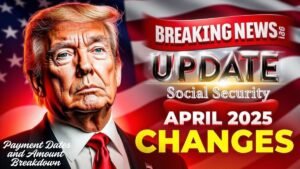Among coin collectors, the 1955 Doubled Die Lincoln Cent is the most well-known and precious error coin of all time. That year, a limited number of coins were produced using a misaligned die, which resulted in doubled front lettering. Unlike other minor mistakes on coins, this error can be easily seen by the naked eye, making it easy to detect and very sought after.
No more than 20,000 to 24,000 of these coins entered circulation before the error was detected, making them uncommon today. Should you get lucky and come across one, it may be worth lakhs of rupees.
Why the 1955 Doubled Die Penny is So Special

The majority of coin mistakes are tiny and require a magnifying glass to see. But this one is special. On the 1955 penny, the phrases “LIBERTY,” “IN GOD WE TRUST,” and the date 1955 are printed twice, like there’s a shadow directly behind them. This occurred because the die that strikes the coin shifted slightly during setup, resulting in a doubled image.
The back (reverse) of the coin is normal—only the front (obverse) side exhibits the error. This clear and strong doubling has made the 1955 Doubled Die a legendary coin in American history.
How to Identify a 1955 Doubled Die Lincoln Cent
If you find a 1955 penny, here’s what to look for:
Date: Must be 1955
Doubling Visible: Look for clear and strong doubling on the front, particularly on:
- “LIBERTY”
- “IN GOD WE TRUST”
- The year “1955”
Front Side Only: Doubling occurs only on the obverse (front). The reverse appears normal.
No Magnifier Required: You can visualize the doubling with your naked eye. A magnifier or loupe will serve to verify it even more.
Don’t Be Misled by Counterfeit Errors

Many coins show a less valuable effect called machine doubling. This looks flat, smeared, or ghost-like—not clear and bold like a real doubled die. In genuine 1955 error coins, the letters are strongly doubled with sharp edges.
Pro Tip: If you’re unsure, compare it with online images of known genuine coins or take it to a certified coin expert.
Value of a 1955 Doubled Die Penny
These are infrequent coins which can be extremely valuable based on their condition:
- Circulated specimens cost $1,000 to $5,000
- Uncirculated coins have been sold for $10,000 to $25,000
- High-grade samples in MS-65 Red state can fetch prices of more than $50,000
The Doubled Die Lincoln Cent of 1955 is a collector’s dream find. Its prominent error makes it simple to find, and its scarcity makes it very valuable. If you have an old penny sitting around from 1955, take a closer examination. You might be holding a small coin that is lakhs-worthy. Just make sure that you verify the doubling is genuine and not created through a machine effect—and never clean the coin prior to having it professionally authenticated.
FAQ’s
Q. So what is the 1955 Doubled Die penny?
A. A 1955 error in which the lettering on the obverse is quite clearly doubling. It can be seen with the naked eye.
Q. How do I know if I have a genuine 1955 Doubled Die penny?
A. ‘LIBERTY’ should have strong doubling, just like ‘IN GOD WE TRUST’ and the date. Doubling occurs only on the obverse of the coin, and the letters should be crisp but not smeared.
Q. What is the value of a 1955 Doubled Die penny?
A. For example, circulated specimens are $1,000-$5,000; Uncirculated ones would be worth $25,000 or so. High-graded ones exceed $50,000.
Q. How is genuine from machine doubling?
A. Genuine doubling shows itself by clearly crisp, definitive letters. Machine doubling gives impossible flatness with indistinct ghosting.
Q. Where can I get my penny graded?
A. Consider sending your coin to third party grading services such as PCGS or NGC for professional grading and authentication.


